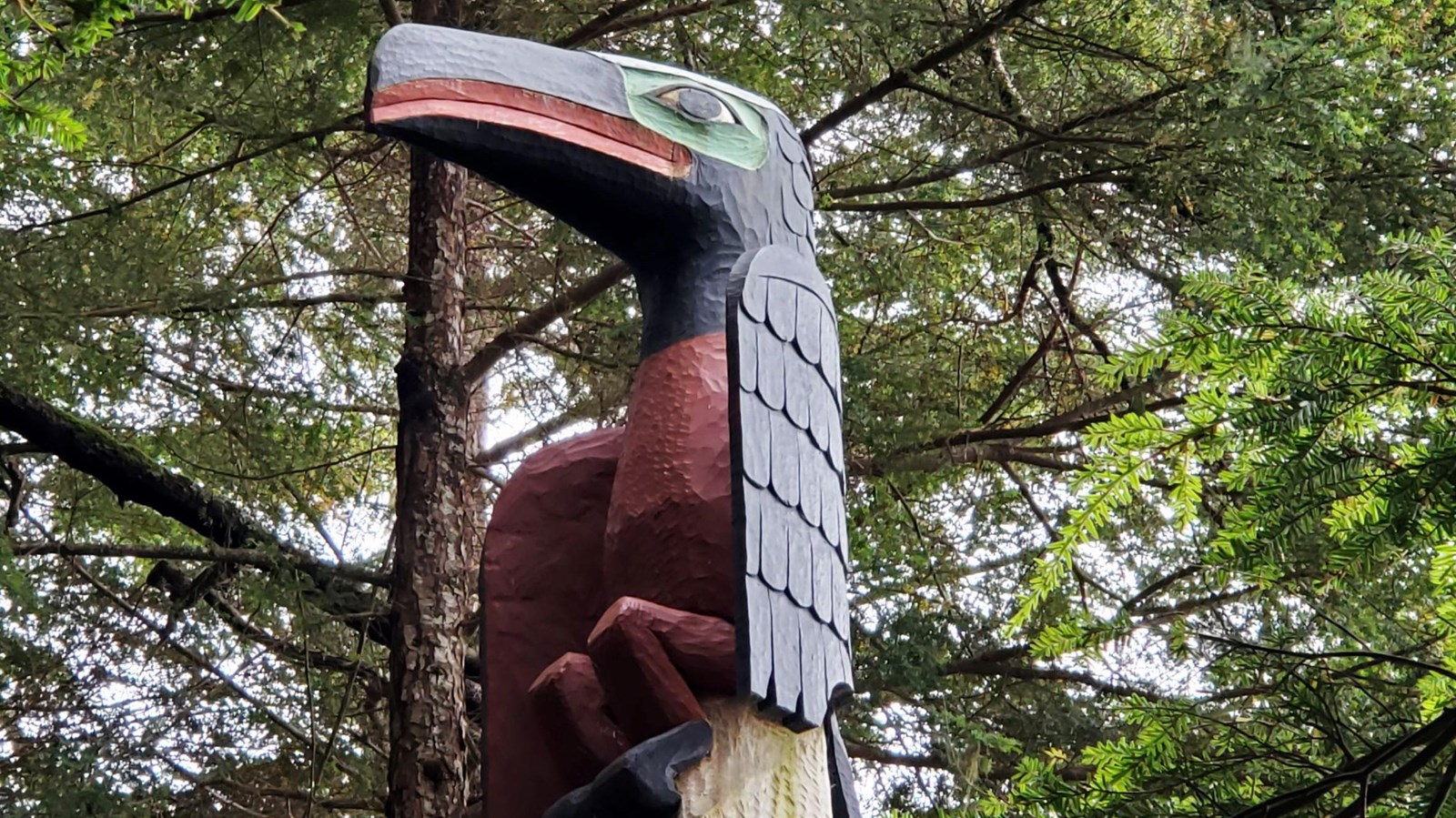Last updated: October 10, 2024
Place
Cormorant Memorial- Mortuary Column

Sitka National Historical Park
Wheelchair Accessible
This pole is a recarving completed in 2015 by Tommy Joseph (Naal’xák’w). The original pole was obtained in 1903 from George Stanley or Thomas Snuck from the now abandoned Tlingit winter village of Tuxekan, on southwest Prince of Wales Island. This pole was first recarved in 1979 by Nathan Jackson (Yéilch Ya’di). The first recarve and the original pole now stand in Totem Hall in the visitor center.
The pole measures 16 feet tall, 2 feet wide. Though the large single, black and red bird figure at the top of this plain column is similar to Raven in form, the feathers carved on the back of the head and wings and the length of the beak suggests it could be a cormorant. You can compare this bird to the Raven memorial pole farther along on the Totem Loop Trail.
Memorial and mortuary columns were common pole types found in Southeast Alaska. Memorial poles, along with house posts, are among the oldest forms of totem poles.There is a fine distinction between memorial and mortuary poles. Both act to remember important people, but mortuary poles were used like a funerary urn, to hold a loved one’s ashes. The mortuary pole was an actual internment, while the memorial pole was a column of remembrance. In some instances, a memorial pole was raised to honor a living person. The similarities in construction and appearance of these two types of poles make it difficult to tell them apart at a glance.
Before Christianity was introduced to the Alaska Native people by the missionaries, the dead were sometimes cremated. The backside of a mortuary column often had a hole used as a receptacle for the ashes of the dead. Both memorial and mortuary columns were usually topped by a single figure indicating the moiety or the clan of the person interred.
